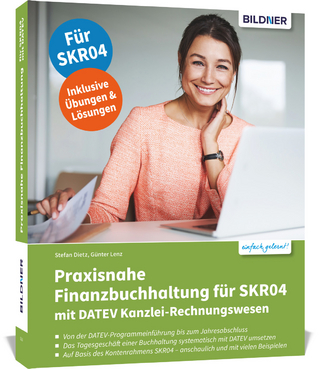
Recording Orchestra and Other Classical Music Ensembles
Taylor & Francis Ltd (Verlag)
978-1-003-31942-9 (ISBN)
Recording Orchestra and Other Classical Music Ensembles explores techniques and methodologies specific to recording classical music. Whether a newcomer or a seasoned engineer looking to refine their skills, this book speaks to all levels of expertise and covers every aspect of recording symphonic and concerto repertoire, opera, chamber music, and solo piano.
With a focus on the orchestra as an instrument and sound source, Recording Orchestra and Other Classical Music Ensembles features sections on how to listen, understanding microphones, concert halls, orchestra seating arrangements, how to set up the monitoring environment, and how to approach recording each section of the orchestra. Offering concise information on preparing for a recording session, the role of the producer, and mixing techniques, a "quick-start" reference guide with suggested setups also helps to introduce the reader to the recording process. A companion website, featuring audio and video examples of various techniques, further reinforces the concepts discussed throughout the book.
This new edition has updated and expanded material, including new chapters on classical crossover projects, film score recording, and immersive/3D recording and mixing, as well as a number of new case studies, making this an essential guide for students, researchers and professionals recording classical music.
Richard King is a multiple Grammy award winner, who specialises in recording classical, jazz, and film score music. He is Associate Professor at the Schulich School of Music of McGill University in Montréal, where he teaches in the Sound Recording area. A long-standing member of the Audio Engineering Society, Richard is a regular convention presenter and panelist, and he is frequently invited to speak at various university level recording programs around the world.
Part 1: Getting Started 1. Introduction 2. How to Listen: Loudspeakers, Headphones, Listening Rooms 3. Understanding Microphones Part 2: Recording Orchestra 4. The Orchestra and Its Various Iterations 5. The Hall, as a Recording Venue 6. The Main Microphones 7. Recording Strings 8. Recording Woodwinds, Brass and Percussion 9. Recording Harp, Piano, Celeste and Organ Part 3: Variations on a Theme 10. Recording Chorus 11. Recording Concertos 12. Recording Solo Voice and Orchestra Part 4: The Recording Session 13. The Role of the Producer in Classical Music Recording 14. How to Carry Out a Successful Recording Session 15. Live Concerts, Live Opera and Productions with Video Part 5: Other Classical Music Ensembles 16. Recording Wind Symphony and Brass Band 17. Recording Chamber Orchestra 18. Recording String Quartet 19. Recording Woodwind and Brass Quintet 20. Recording Piano with Other Instruments 21. Recording Solo Piano 22. Recording Classical Crossover Projects Part 6: Post Production 23. Editing 24. Mixing 25. Final Assembly and Mastering Part 7: Multichannel Recording and Mixing 26. How to Listen in Surround Sound 27. Recording and Mixing for 5.1 Surround Sound 28. Recording and Mixing for Immersive/3D Content 29. Film Score Recording and Mixing Part 8: Case Studies 30. Recording Orchestra - Case Studies 31. Recording Chamber Music - Case Studies
| Erscheinungsdatum | 03.02.2024 |
|---|---|
| Reihe/Serie | Audio Engineering Society Presents |
| Zusatzinfo | 13 Tables, black and white; 73 Line drawings, black and white; 43 Halftones, black and white; 116 Illustrations, black and white |
| Verlagsort | London |
| Sprache | englisch |
| Maße | 178 x 254 mm |
| Themenwelt | Kunst / Musik / Theater |
| Mathematik / Informatik ► Informatik | |
| ISBN-10 | 1-003-31942-4 / 1003319424 |
| ISBN-13 | 978-1-003-31942-9 / 9781003319429 |
| Zustand | Neuware |
| Haben Sie eine Frage zum Produkt? |
aus dem Bereich


